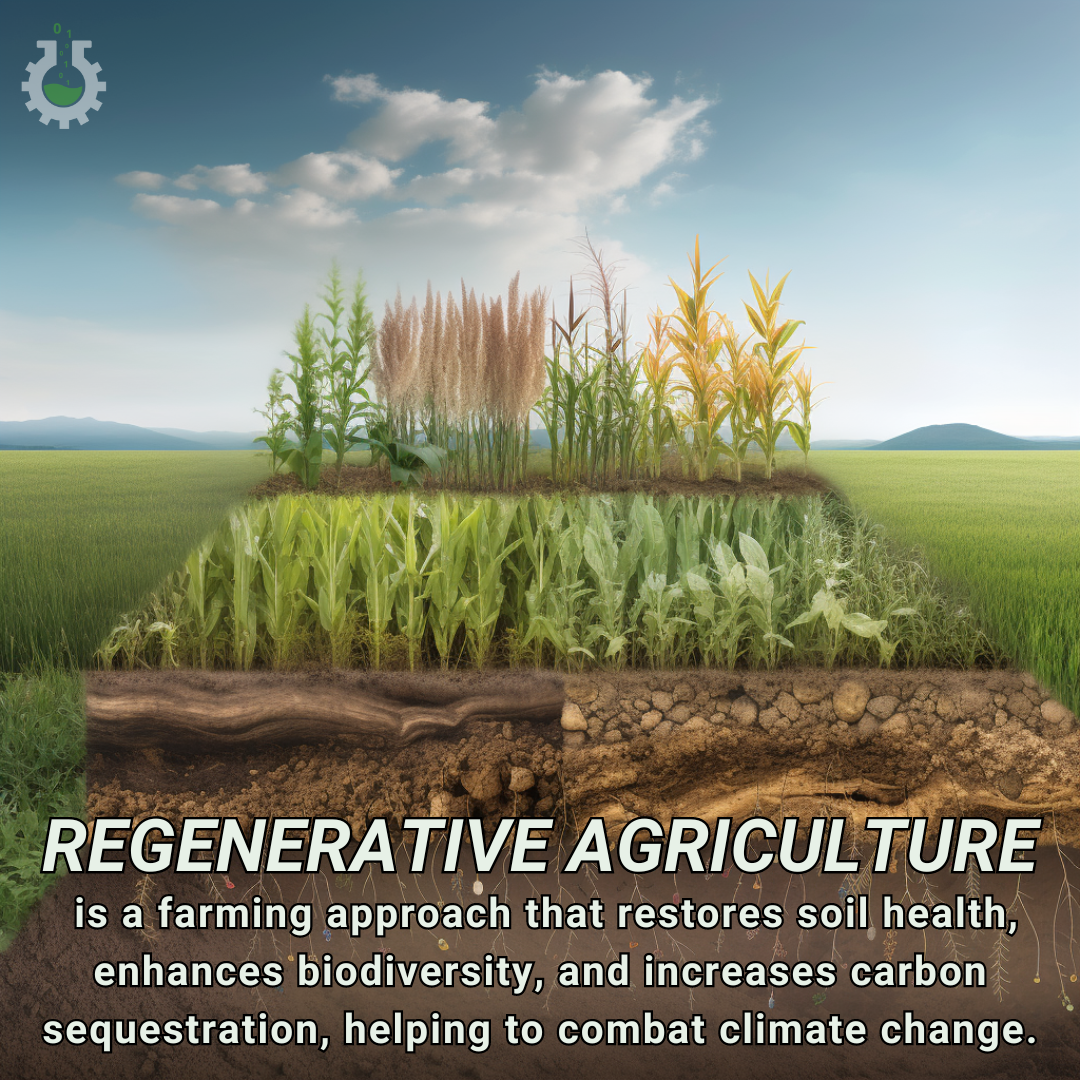May 21, 2024
Climate Change Poster Collection of the Day – Regenerative Agriculture
Book a Demo
Today’s Climate Change Poster Collection highlights Regenerative Agriculture, represents a transformative approach to farming, one that seeks not only to sustain but to actively restore and enhance the health of ecosystems. At its core, regenerative agriculture focuses on revitalizing soil health, increasing biodiversity, and sequestering carbon, making it a powerful tool in the fight against climate change. Unlike conventional agricultural practices that often rely on chemical inputs, monocultures, and intensive tillage, regenerative agriculture employs a suite of techniques designed to work in harmony with natural processes. These techniques include minimal soil disturbance, cover cropping, crop rotation, agroforestry, and the integration of livestock through managed grazing systems.
One of the fundamental principles of regenerative agriculture is the enhancement of soil health. Healthy soils are rich in organic matter and teeming with microbial life, which are crucial for nutrient cycling and plant growth. Practices such as cover cropping and reduced tillage help to build and maintain soil organic matter, improve soil structure, and increase water infiltration and retention. Cover crops, which are planted during off-seasons when main crops are not growing, protect the soil from erosion, suppress weeds, and add organic matter to the soil when they decompose. Reduced or no-till farming minimizes soil disturbance, preserving soil structure and protecting the habitat of beneficial soil organisms.
The role of regenerative agriculture in climate change mitigation is particularly significant due to its ability to sequester carbon. Soils managed under regenerative practices can act as substantial carbon sinks, capturing and storing carbon dioxide from the atmosphere. This process of carbon sequestration is essential in reducing the overall concentration of greenhouse gases, which are the primary drivers of global warming. By increasing soil organic matter, regenerative agriculture not only improves soil fertility and productivity but also helps to draw down atmospheric carbon, thereby mitigating climate change.
Biodiversity is another critical component of regenerative agriculture. Diverse plant species and healthy soil microbiomes contribute to the resilience of agricultural systems, making them less susceptible to pests, diseases, and extreme weather events. Crop rotation and polycultures, where multiple crop species are grown together, break pest and disease cycles and improve soil health. The integration of agroforestry, which combines trees and shrubs with crops and livestock, further enhances biodiversity and provides additional ecosystem services such as shade, windbreaks, and habitat for beneficial insects and wildlife.
Livestock integration through practices like rotational grazing also plays a vital role in regenerative agriculture. Managed grazing mimics the natural movement of wild herbivores, promoting even grazing and allowing pastures to recover and regenerate. This practice improves soil structure, enhances nutrient cycling, and increases forage production. Livestock manure adds organic matter and nutrients to the soil, further boosting soil health and fertility.
Water conservation is another significant benefit of regenerative agriculture. Healthy soils with high organic matter content have improved water-holding capacity, reducing runoff and erosion while enhancing groundwater recharge. This not only helps to mitigate the impacts of droughts but also reduces the risk of flooding. By improving soil health and water management, regenerative agriculture contributes to more resilient agricultural systems that can better withstand the challenges posed by climate change.
The connection between regenerative agriculture and climate change mitigation extends beyond environmental benefits to encompass economic and social dimensions. Regenerative practices can increase farm profitability by reducing input costs and enhancing crop yields and livestock productivity over the long term. By fostering healthier soils and more resilient ecosystems, regenerative agriculture creates a sustainable economic model for farmers. It also supports rural communities by promoting local food systems and reducing dependence on external inputs.
Moreover, regenerative agriculture aligns with principles of social equity and justice. It recognizes the importance of traditional and indigenous knowledge in sustainable land management and seeks to empower farmers and communities to steward their land in ways that are ecologically sound and culturally appropriate. By promoting practices that are regenerative rather than extractive, this approach to agriculture offers a pathway to healing the land and building more just and resilient food systems.
In essence, regenerative agriculture offers a comprehensive solution to some of the most pressing issues of our time. By enhancing soil health, increasing biodiversity, sequestering carbon, and conserving water, regenerative practices foster a harmonious relationship between farming and the natural world. As we face the dual challenges of climate change and food security, adopting regenerative agriculture on a wider scale can help us move towards a more sustainable future where agriculture is part of the solution rather than a contributor to the problem. By embracing regenerative principles, we can restore the health of our ecosystems, ensure the resilience of our food systems, and create a more equitable and sustainable world for future generations.
Discover an inspiring collection of climate change poster.



